NEWS
Application of spread spectrum communication mobile communication ups and downs
Time:2021-07-22 View:
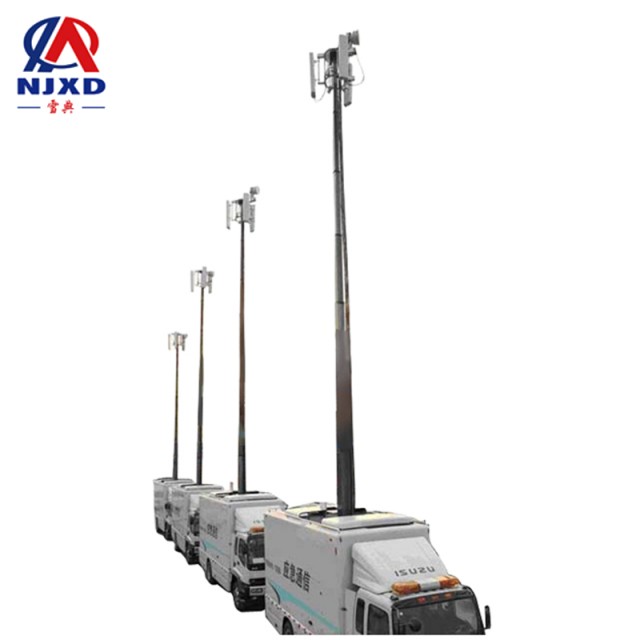
Spread spectrum communication, referred to as spread spectrum communication, is a kind of information transmission mode, and the frequency span of its signal is much larger than the minimum bandwidth necessary for the transmitted information; the expansion of frequency band is completed by an independent code sequence (usually pseudo-random code), which is realized by coding and modulation, and has nothing to do with the transmitted information data; the receiver uses the same code to synchronously receive, de-expand, and restore the transmitted information data.
Definition
Spread spectrum communication, optical fiber communication and satellite communication are known as the three high-tech communication transmission modes entering the information age.
Theoretical basis
According to the channel capacity formula summarized by Shannon (C.E.Shannon) in the research of information theory, namely Shannon formula:
C=W×Log2(1+S/N)
In the formula: C -- information transmission rate S -- useful signal power W -- frequency span N -- noise power
As can be seen from the formula:
In order to improve the transmission rate C of information, it can be realized from two ways: plus-sized the bandwidth W or increasing the signal-to-noise ratio S/N. In other words, when the transmission rate C of the signal is fixed, the signal bandwidth W and the signal-to-noise ratio S/N are interchangeable, that is, increasing the signal bandwidth can reduce the requirement on the signal-to-noise ratio, when the bandwidth increases to a certain extent, allowing the signal-to-noise ratio to further decrease, it is also possible that the useful signal power is close to the noise power or even submerged under the noise. Spread spectrum communication is to exchange broadband transmission technology for the advantages of signal-to-noise ratio, which is the basic idea and theoretical basis of spread spectrum communication.
Working Principle
In spread spectrum transmitter, RF carrier usually goes through two modulation processes: one is the same as conventional modulation, and is modulated by information signal; The other is spread spectrum modulation by code sequence, accordingly, in the receiver, the agreed code sequence is used for correlation processing (descaling), and then the information signal is demodulated.
The information input at the originator is first modulated by information to form a digital signal, and then the spread spectrum code sequence generated by the spread spectrum code generator modulates the digital signal to broaden the spectrum of the signal. The widened signal is then modulated to RF and sent out.
The broadband RF signal received at the receiving end is converted to the intermediate frequency, and then the spread spectrum code sequence generated locally and the same as that at the originating end is de-correlated and desolated. After the information is demodulated and restored to the original information output.
Thus it can be seen that the general spread spectrum communication system must carry out three modulation and corresponding demodulation. The primary modulation is information modulation, the secondary modulation is spread spectrum modulation, and the tertiary modulation is radio frequency modulation, as well as corresponding information demodulation, despreading and radio frequency demodulation.
Compared with general communication systems, spread spectrum communication is more spread spectrum modulation and decompression.

System Classification
Spread spectrum systems include the following spread spectrum methods:
(1) direct sequence spread spectrum
For short, DS(DirectSequence): uses a high bit rate spread spectrum code sequence to directly extend the spectrum of the signal at the originator, the same spreading code sequence is directly used at the receiver to demodulate the extended signal spectrum and restore the original information. Since direct sequence spread spectrum signal extends the information signal into a wide frequency band, its power spectrum density is lower than that of noise, which makes it hidden in noise and difficult to be detected. For interference signals, the code sequence of the receiver will process them non-correlated, which significantly reduces the interference level and is suppressed. This method is most widely used and has become a hot research topic in the field of industry.
(2) frequency hopping spread spectrum
FH(FrequencyHopping) for short: the so-called frequency hopping, which means more precisely: Multi-frequency shift keyed by selecting a certain code sequence. In other words, the spread spectrum code sequence is used to carry out frequency shift keyed modulation, which makes the carrier frequency jump continuously, so it is called frequency hopping. Frequency hopping system is called "multi-frequency, code selection, frequency shift keyed" system, which mainly consists of code generator and frequency synthesizer. Generally, the number of frequencies selected is more than ten to hundreds, and the rate of frequency jump is 10 to 105 hops per second. The signal is rapidly frequency hopping at many randomly selected frequencies, which can avoid tracking interference or interfering frequency points.
(3) time-hopping spread spectrum
TH(TimeHopping) for short: Similar to frequency hopping, when jumping, the transmitted signal jumps in the timeline. First, divide the timeline into many time slices. In a frame, which TIME piece of transmitted signal is controlled by spreading code sequence. The jump time can be understood as the time shift key of multi-time slices selected by a certain code sequence. Time hopping spread spectrum system mainly controls the on-off of transmitter through Spread Spectrum code, which can reduce the interference between time division multiplexing systems.
(4) broadband linear frequency modulation
Short for Chirp(ChirpModulation): If the frequency of the transmitted RF pulse signal changes linearly within one cycle, it is called linear frequency modulation. Because its frequency changes in a wider tie, the frequency band of the signal is also broadened. This spread spectrum modulation method is mainly used in radar, but it is also used in communication.
(5) mixing mode
The above-mentioned basic spread spectrum systems have their own advantages and disadvantages. Sometimes it is difficult to meet the requirements by using one system alone. Combining the above centralized spread spectrum methods to form a hybrid spread spectrum system, common ones are FH/DS, TH/DS, FH/TH, etc.
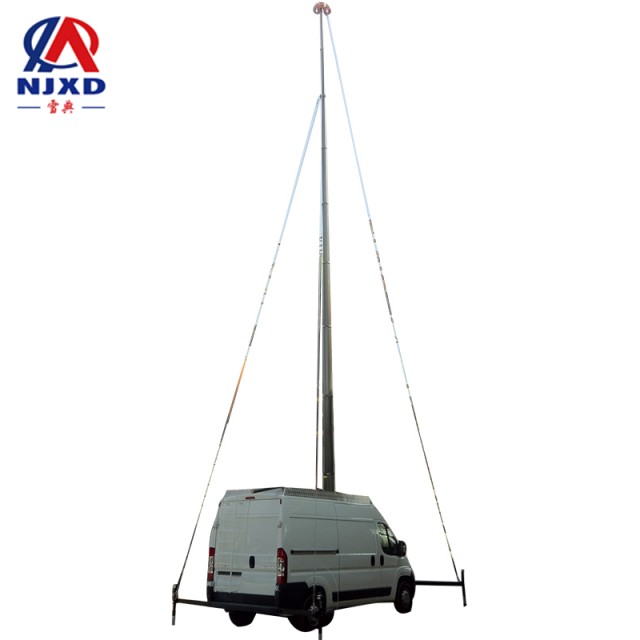
Features
Because spread spectrum communication can greatly expand the spectrum of signals, the transmitter uses Spread Spectrum code sequence for spread spectrum modulation, and the receiver uses correlation demodulation technology, which makes it have many excellent performances that narrow band communication is difficult to replace, after civil use, it can be quickly extended to various public and private communication networks, mainly having the following characteristics:
(1) easy to reuse frequency, improving wireless spectrum utilization
Wireless spectrum is very valuable. Although it has been developed and utilized from long wave to microwave, it still cannot meet the needs of the society. In narrowband communication, channel division is mainly used to prevent interference between channels. For this reason, all countries in the world have set up frequency management agencies, and users can only use the frequencies that apply for approval. The transmission power of spread spectrum communication is extremely low, relevant receiving technology is adopted, and it can work in the background of channel noise and thermal noise, and it is easy to reuse the same frequency in the same region, you can also share the same frequency resource with various narrow channel communications. Therefore, in the United States and most countries in the world, spread spectrum communication does not need to apply for frequency, and any individual or unit can use it without license.
(2) strong anti-interference and low bit error rate
Spread spectrum communication occupies a relatively wide bandwidth during spatial transmission, and the receiver adopts the method of correlation detection to de-expand, so that useful broadband information signals can be restored to narrowband signals, however, non-required signals are extended into broadband signals, and then useful signals are extracted through narrowband filtering technology. In this way, for all kinds of interference signals, due to their non-correlation at the receiving end, there are only very weak components in the desolated narrowband signal and the signal-to-noise ratio is very high, so the anti-interference is strong. When processing the gain Gp35dB, the anti-interference tolerance is Mj22dB, that is, under the condition of negative signal-to-noise ratio (22dB), the signal can be extracted from the noise. In commercial communication systems, spread spectrum communication is a communication mode that can work under the condition of negative signal-to-noise ratio.
(3) good concealment and little interference to various narrowband communication systems
Since the spread spectrum signal is expanded in a relatively wide frequency band, the power per unit frequency band is very small, and the signal is annihilated in the noise, which is generally not easy to be found, however, it is more difficult to further detect signal parameters such as pseudo-random coding sequences, so it has good concealment. Moreover, because the spread spectrum signal has a very low power spectral density, it has little interference to various narrowband communication systems used. Foreign military communications have been equipped with frequency hopping radio stations using HF, VHF and UHF bands, and direct sequence spread spectrum radio stations have also begun to enter the practical stage.
(4) code division multiple access can be realized
Spread spectrum communication improves anti-interference performance, but costs band-width. If many users share this wide band, the utilization rate of the band can be greatly improved. Due to the spread spectrum modulation of spread spectrum code sequences in spread spectrum communication, the excellent autocorrelation and cross-correlation characteristics between Spread Spectrum code sequences of various code types are fully utilized, when the receiver uses correlation detection technology to de-expand, the signals of different users can be distinguished and useful signals can be extracted under the condition of assigning different user codes. In this way, in a broadband band, many users can talk at the same time without interfering with each other.
(5) anti-multipath interference
In all frequency bands of wireless communication, multi-path interference has always been a difficult problem to solve for a long time. In the past narrowband communication, the following two methods were adopted to improve the anti-multipath interference capability: one is to separate the strongest useful signals and eliminate interference signals from other paths, that is, the diversity receiving technology is adopted; The second is to try to add signals with different delays and phases from different paths from the receiving end in time domain and combine them into strong useful signals, that is, the comb filter method is adopted.
These two technologies are easy to implement in spread spectrum communication. Using the autocorrelation characteristics of spread spectrum codes, the strongest useful signals are extracted and separated from multipath signals at the receiving end, or the waveform of the same code sequence from multiple paths is added and synthesized, this is equivalent to the action of comb filter. In addition, in a spread spectrum system that adopts frequency hopping spread spectrum modulation, it actually plays a role of frequency diversity because signals of multiple frequencies are used to transmit the same information.
(6) accurate timing and ranging
The propagation speed of electromagnetic wave in space is a fixed speed of light. People will naturally think that if the propagation time of electromagnetic wave between two objects can be accurately measured, it is equal to measuring the distance between two objects. In spread spectrum communication, if the spread spectrum is very wide, it means that the spread spectrum code rate used is very high, and the time occupied by each chip is very short. When the transmitted spread spectrum signal is reflected back by the measured object, the spread spectrum code sequence is demodulated at the receiving end, and then the phase difference between the two code sequences is compared, the time difference between spread spectrum signals can be accurately measured to calculate the distance between the two. The accuracy of measurement depends on the width of the chip, that is, the width of the spread spectrum. The narrower the chip, the wider the extended spectrum and the higher the accuracy.
(7) suitable for digital voice and data transmission, as well as various communication services
Spread spectrum communication generally adopts digital communication and code division multiple access technology, which is suitable for computer networks and data and image transmission.
(8) easy installation and easy maintenance
Spread spectrum communication equipment is highly integrated and adopts the cutting-edge technology of modern electronic technology. Therefore, it is very reliable, compact, low cost after extensive application, convenient installation and easy to popularize and apply.
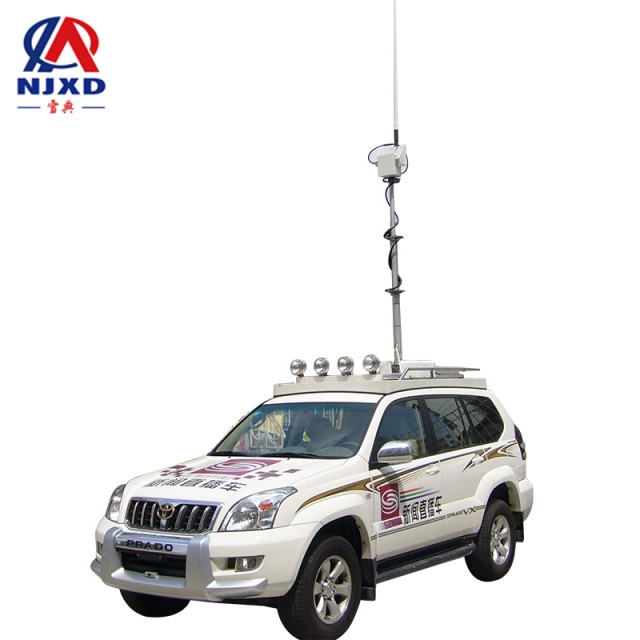
Application Scope
The development of spread spectrum communication technology began from ranging. It has been widely used in military since 1980 s. In recent years, it has been widely used in many fields of modern science and technology, and its application scope has been continuously expanded.
(1) Application in military communications
In military communications, spread spectrum communication is the most important technical means of communication against resistance. It is widely used in various communications, information systems, weapon systems and C3I (communication, control, command and intelligence) system. In the communication between ground, sea and air combat, spread spectrum technology is usually used to improve the anti-interference ability of communication stations, improve the anti-interference performance and digitalization will be the mainstream of the development of tactical radio stations. In the Gulf War, the United States-led coalition forces used global positioning system (GPS), Joint Tactical Information Distribution System (JTIDS) and positioning Reporting System (PLRS) using spread spectrum technology. And a large number of systems such as Single-Channel Ground and Airborne Systems (SINCGARS). Practical application fully proves the importance of spread spectrum technology in military communication system.
(2) application in mobile communication
In civil communication, the new generation of digital cell in a honeycomb mobile communication system has widely adopted spread spectrum technology, which aims to improve spectrum utilization and reduce the influence of co-channel interference. The code division multiple access system using spread spectrum technology allocates a unique and random code sequence to each mobile station and is not related to each other, so as to distinguish the signals of each mobile station. Therefore, it can accommodate more users in one channel, and its spectrum utilization rate is about 20 times that of the Frequency Division Multiple Access communication system, and each cell can accommodate up to 2500 users. In addition, the fading caused by multi-path effect in mobile communication is relatively serious, and the spread spectrum technology can effectively overcome the influence of multi-path effect on mobile communication.
(3) application of satellite communication
Direct sequence spread spectrum technology and frequency hopping technology have been widely used in military satellite communication. Due to the flexible networking of spread spectrum code division multiple access system and the ability to withstand overload when the number of users working simultaneously in the network increases and exceeds the designed load, it has also been applied in civil satellite communication. Civil satellite communication uses Spread Spectrum code division multiple access technology and pseudo-random sequence to directly spread spectrum to spread energy of signals to reduce interference of satellite system.
(4) application of ranging and positioning
GPS (global satellite positioning system) is a system in which multiple satellites share two carrier frequencies to send navigation and positioning signals. Spread Spectrum code division multiple access is needed to distinguish the addresses of each satellite. Each satellite is assigned a pseudo-random sequence code type. The narrower the code piece width of the pseudo-random sequence, the higher the ranging accuracy. At the same time, direct sequence spread spectrum is adopted to greatly enhance the ranging anti-interference capability. Moreover, because it adopts passive positioning mode, that is, no response signal from the user terminal is required in the positioning process, there is no limit on the number of users that the system can accommodate, this is just like a radio station has no limit on the number of users' radios listening to programs. China's military and civil departments have widely used GPS receiving equipment and used GPS positioning system for positioning work.
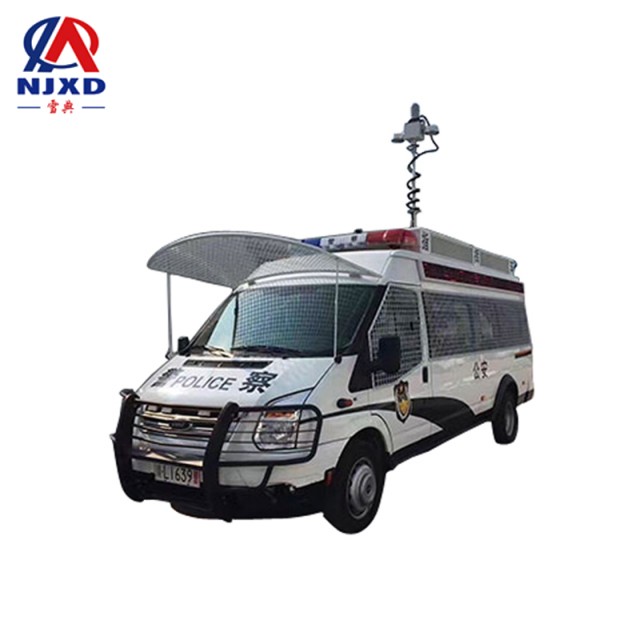
Development Trend
The 21st century will be the era of spread spectrum communication. No matter in military or civil aspects, spread spectrum communication will be of great use. The technology will be further mature and the application will be more extensive. In future military communications, spread spectrum communication will play an important role in electronic countermeasures (ECM) and opposition resistance (ECCM). In the application and development field of civil communication, there are mainly digital cell in a honeycomb mobile communication, personal communication network (PCN), fireworks and bandits and Other Alarm and public security hidden communication, sports competition and securities trading communication, digital stereo broadcasting and amateur radio communication, etc. VLSI chip and low power transmission technology can make Spread Spectrum equipment small in size, light in weight and low in price. It will become the basic means of urban wireless communication in the future, such as personal communication PCN, wireless business communication PBX and wireless ISDN, etc.
The limitation of spread spectrum communication mainly comes from the technical aspect. The limitation of direct sequence spread spectrum is to use high PN bit rate for spread spectrum modulation, using CMOS to make the maximum chip rate up to 70Mchips/s, and using gallium arsenide transistor devices, it can reach up to 2Gchips/s. The limitation of frequency hopping (FH) lies in the high-speed conversion of frequency synthesizer without clutter generation. Digital controlled oscillator can generate such signals, the frequency hopping rate is as high as 1 mhop per second in the 20MHz bandwidth. In addition, the number of users overlapping in the same frequency band also limits spread spectrum communication. The more overlap, the lower the signal-to-noise ratio and the higher the error probability, this requires allocating frequency bands or formulating regulations to improve the utilization rate of frequency bands. There is no doubt that spread spectrum communication technology will continue to mature and develop in the process of overcoming these limitations, making greater contributions to human society.
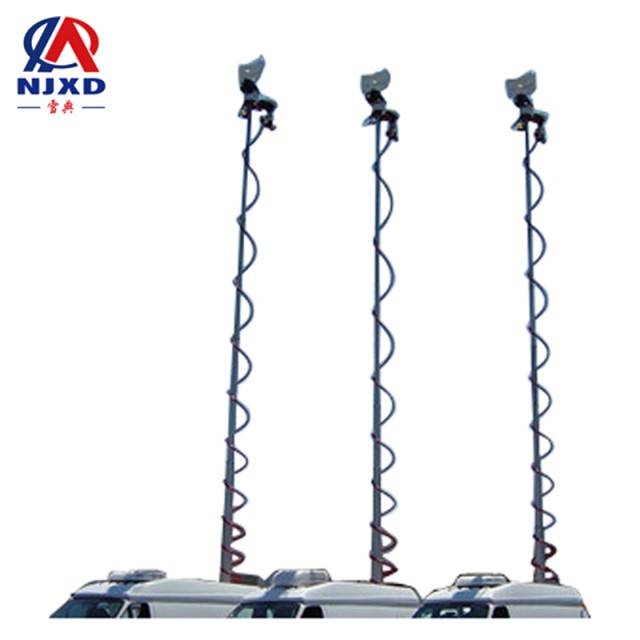
CATEGORY
NEWS
- Short wave communication system antenna lifting bracket
- Application of spread spectrum communication mobile communication ups and downs
- Brief introduction of microwave communication technology lifting microwave antenna bracket
- System structure of microwave communication of lifting antenna
- Main Features and technical principles of microwave lifting communication